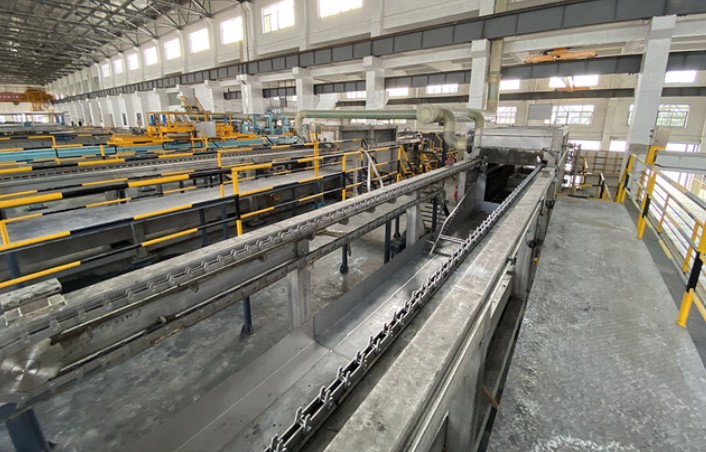NEWS&EVENTS
Home > News&Events > Company news > Antimony electrolytic refining equipment: the key link from crude antimony to high-purity antimony ingots
Antimony electrolytic refining equipment is the core link in the antimony metallurgical process to achieve the transformation from crude antimony to high-purity antimony ingots. It removes impurities through the principle of electrolysis and produces high-purity refined antimony, which is a key step in increasing the added value of antimony products.

The core equipment of the antimony electrolytic refining process is the electrolytic cell. In the electrolytic cell system, the antimony anode plate acts as the anode to undergo an electrochemical dissolution reaction. When a DC power supply is connected to form a closed loop, under a specific electrolyte chemical environment, the antimony atoms on the anode surface undergo an oxidation reaction, lose electrons and transform into antimony ions, and gradually dissolve into the electrolyte system. This process can be regarded as antimony atoms breaking through the original lattice constraints and entering the liquid phase environment for migration.
Precious metal elements such as silver and gold that coexist with antimony in crude antimony raw materials will not undergo an anode dissolution reaction under the same electrolytic conditions due to their high standard electrode potential. These insoluble impurities are eventually enriched at the bottom of the anode to form anode mud through physical sedimentation. The anode mud is not industrial waste, but a strategic secondary resource containing precious metals such as silver and gold. Through subsequent process treatment, it can achieve efficient recovery and recycling of precious metal elements, significantly improving the comprehensive utilization rate of resources.
While the anode antimony undergoes electrochemical dissolution, the antimony ions in the electrolyte undergo a reduction reaction on the cathode surface. By obtaining electrons, the antimony ions are reduced to metallic antimony and undergo electrocrystallization growth on the cathode surface, gradually forming a high-purity cathode antimony deposition layer with a dense structure.
Antimony electrolytic refining technology achieves efficient separation of antimony and impurity elements by precisely controlling electrochemical parameters. This process not only significantly improves the purity level of antimony products, but also constructs a resource circulation system for the coordinated extraction of "antimony-precious metals". It not only reflects the scientific and technological innovation capabilities in the field of modern material processing, but also provides technical support for the sustainable development and utilization of strategic metal resources, and effectively promotes the transformation and upgrading of the antimony industry towards high-end and green directions.